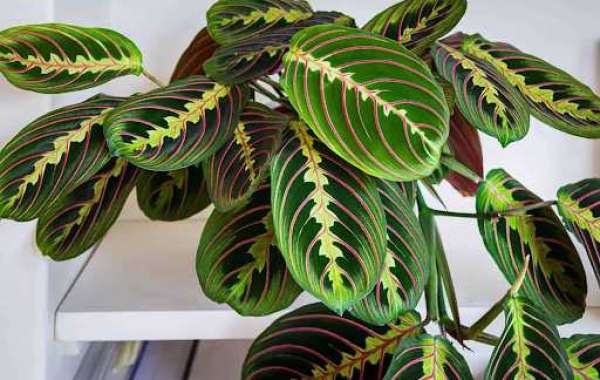Nature has an innate ability to amaze us with its diversity and captivating wonders. One such marvel is the Prayer Plant, a vibrant and eye-catching plant known for its beautiful flora and intriguing behaviour.
Whether you're a seasoned plant enthusiast or a beginner looking to add a touch of nature to your living space, this blog will provide you with all the essential information you need to know about this beautiful houseplant. From its unique characteristics to its care requirements, we will explore the world of these plants, offering valuable insights and tips to help you cultivate and enjoy these delightful foliage wonders.
Understanding the Prayer Plant
The Prayer Plant, scientifically known as Maranta leuconeura, is an evergreen perennial native to the tropical rainforests of South and Central America. What makes this houseplant truly fascinating are its strikingly patterned leaves, vibrant green hues and intricate veins resembling brush strokes. The plant's name originates from its unique leaf movement, where the leaves fold up in the evening as if in prayer and then unfold in the morning.
Care and Maintenance
- Light and Temperature: Prayer Plants thrive in bright, indirect light. Placing them near east or north-facing windows is ideal, as direct sunlight can scorch their delicate foliage. These plants prefer temperatures between 65°F and 80°F (18°C - 27°C) during the day, with a slight drop at night.
- Watering and Humidity: Maintaining consistent moisture levels is key to keeping your plant healthy. Water them when the top inch of the soil feels slightly dry, ensuring not to overwater or let the soil become waterlogged. These plants appreciate higher humidity levels, so misting their leaves regularly or placing them on a pebble tray filled with water can help create a suitable environment.
- Soil and Fertilizer: Use a well-draining, peat-based potting mix for your Prayer Plant. It should retain moisture while allowing excess water to drain. Fertilize every two to four weeks during the growing season with a balanced, water-soluble fertilizer to promote healthy growth.
Propagation and Pruning
These plants can be propagated through stem cuttings or by division. Stem cuttings should be taken from healthy, non-flowering stems and placed in a moist growing medium until they develop roots. Division involves carefully separating the plant into smaller sections, ensuring each division has sufficient roots. Pruning is essential to maintain the plant's shape and remove damaged or dead leaves.
Common Pests and Diseases
While Prayer Plants are generally resilient, they can still fall victim to pests such as spider mites, aphids, and mealybugs. Regularly inspect the plant for signs of infestation and promptly treat them with organic insecticidal soap or neem oil. Overwatering can lead to root rot, so it's important to maintain proper watering practices to avoid this issue.
Enhancing Your Living Space with Prayer Plants
The Prayer Plant's striking foliage adds an element of elegance and natural beauty to any room. Their lush, patterned leaves make them perfect for hanging baskets or table centrepiece plants. Additionally, it can help purify the air by removing toxins and increasing humidity, promoting a healthier indoor environment.
Conclusion
The Prayer Plant is a captivating and beautiful houseplant that can effortlessly elevate the ambience of any living space. By understanding its unique characteristics and following the proper care guidelines, you can enjoy the beauty and grace of these foliage wonders in your own home. Remember to provide adequate light, maintain appropriate watering practices, and create a humid environment to ensure the optimal growth of your plant.
Are you ready to bring nature indoors? If yes, hurry and buy plants online. With their mesmerizing leaves and enchanting presence, Prayer Plants will be a delightful addition to your indoor garden.










